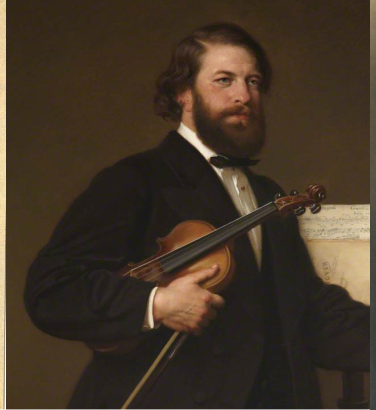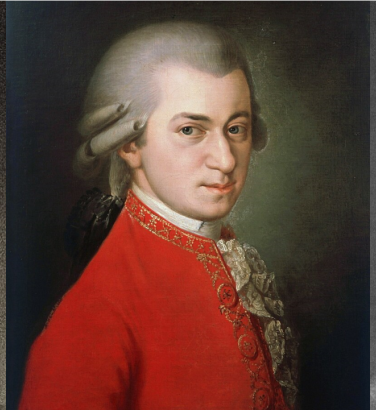
Mendelssohn and the Bach revival
15 Apr 2024
News Story
Strange though it may seem to us, JS Bach was best known in his own lifetime as an organist. Beyond his immediate family circle, only very few knew of his even greater skill as a composer.
This mightn’t have been the case had there been any concerted effort to catalogue Bach’s works. The nearest attempt to do so may have come from the composer himself, if the theory that he put together his Mass in B minor as a compendium of his best vocal music is to be believed. The scores for the bulk of his sacred music (the cantatas in particular, of which about 200 are known to have survived) lay at various churches, uncatalogued, undiscovered and unacknowledged.
Add to this changing tastes and it is hardly surprising that Bach fell from favour after his death in 1750. His often cerebral music already appeared old-fashioned, increasingly at odds with the dawning Classical age, when the arts became more concerned with beauty of line than the intricate detail beloved of the Baroque era.
Not that Mendelssohn’s rediscovery of the St Matthew Passion in 1824 came entirely out of the blue. His great aunt Sarah Levy, a favourite pupil of Bach’s son Wilhelm Friedemann, had built up an important collection of Bach manuscripts, though it was her older sister Bella (Mendelssohn’s grandmother) who gave him a copy of the score. That said, there can be no doubt that public awareness of Bach had diminished considerably in the 79 years between his death and Mendelssohn conducting the St Matthew Passion (albeit heavily condensed and edited to suit the available forces) in 1829.
It is as if I heard the roaring of the sea from afar.
The influence of Bach’s music, along with Handel’s – which had never really fallen from favour – is obvious on Mendelssohn’s 1846 oratorio Elijah (performed by the SCO at the 2023 BBC Proms and at the end of the 2023/24 Season). There is something of the opening movement of the St John Passion in Elijah’s first chorus, and while Mendelssohn does not include any Lutheran hymns, he does draw particular attention to some of God’s pronouncements by setting them in a chorale-like style. Stylistically, his moments of reflection may be far removed from those to be found in the St Matthew Passion, but the unexpected shifts into these at the height of the drama owe a clear debt to Bach.
The foundation of the Bach-Gesellschaft Leipzig (Leipzig Bach Society) in 1850, the centenary of the composer’s death, may well not have happened without Mendelssohn’s key contribution to musical history. By the time the Society had published all Bach’s (then) known works in 1899, choral societies had proliferated across both the German and English-speaking worlds, popularising a good deal of Baroque repertoire. Their concerts were in keeping with the expansive works of then contemporary music, with performers generally numbering well into three figures – in the case of the St Matthew Passion, 300-400 musicians was the norm, and even then, it was not until 1912 that the work was first given unabridged.
Such performances would of course be regarded as being of questionable authenticity today (to put it mildly), but clearly the music still stirred emotions in its audience, not to mention its players and singers. For all that, doubts were clearly forming in some quarters: in 1913, George Bernard Shaw wrote that, “if I were a member of the House of Commons, I would propose a law making it a capital offense to perform an oratorio by Handel with more than 80 performers in the chorus and orchestra.”

The Old Bach Memorial in Leipzig (detail) - erected in 1843, this is the earliest memorial to the composer
If Bach’s larger-scale works were now assured of a secure place on concert platforms, the same cannot be said for his instrumental music, much of which was valued principally as teaching materials. Pablo Casals giving the first public performances of the cello suites in the early 1910s was an important first step in challenging this status quo. It would be almost three decades before he recorded the full set, Wanda Landowska’s landmark recording of the Goldberg Variations – the first on the harpsichord – having preceded this by a few years.
If Landowska’s instrument was rather bulkier than the one Bach knew, the rise of performances on period instruments saw a return to a style he would have recognised. This blew away many of the cobwebs which had gathered on this hallowed music, resulting in leaner performances shorn of vibrato, often brisker speeds and no end of long-hidden detail coming to light.
One of the pioneers of this movement was Nikolaus Harnoncourt, who founded Concentus Musicus Wien in 1953 and was the first to complete a recorded cycle (1971-1990) of the Bach cantatas. The more recent appearance of several acclaimed alternatives – a much-lauded series from Masaaki Suzuki and Bach Collegium Japan among them – is testament to these works finally gaining the recognition they deserve, something unthinkable without Harnoncourt’s drive.
The sense of awe which characterised many Bach interpretations of the past is still there, of course, but in the wake of historically informed performance (as it is now termed), it has been tempered with a better appreciation of the dance rhythms which underpin so much of his music. Mendelssohn’s version of the St Matthew Passion may no longer hold sway today, but there can be no doubt that we would not recognise Bach for the genius he was without the younger composer’s efforts, nearly two centuries ago.
Related Stories
![A violinist shown at three different ages: as a young man in a drawing, middle-aged in a painting and elderly in an old photo]()
Joseph Joachim and the great German violin concertos
7 April 2025
Beethoven, Mendelssohn, Bruch and Brahms: four violin concertos, all connected by a single violinist.![Three men, the first two in 18th century formal dress (one in black and white, one in a red coat), the last in an old photo, smoking]()
What is a sinfonia concertante?
17 March 2025
We delve into the history of a hybrid genre ...![]()
The SCO Chorus on music for Lent
10 March 2025
With Easter just around the corner, we delve into perhaps the richest (and often darkest) choral repertoire of all ...


